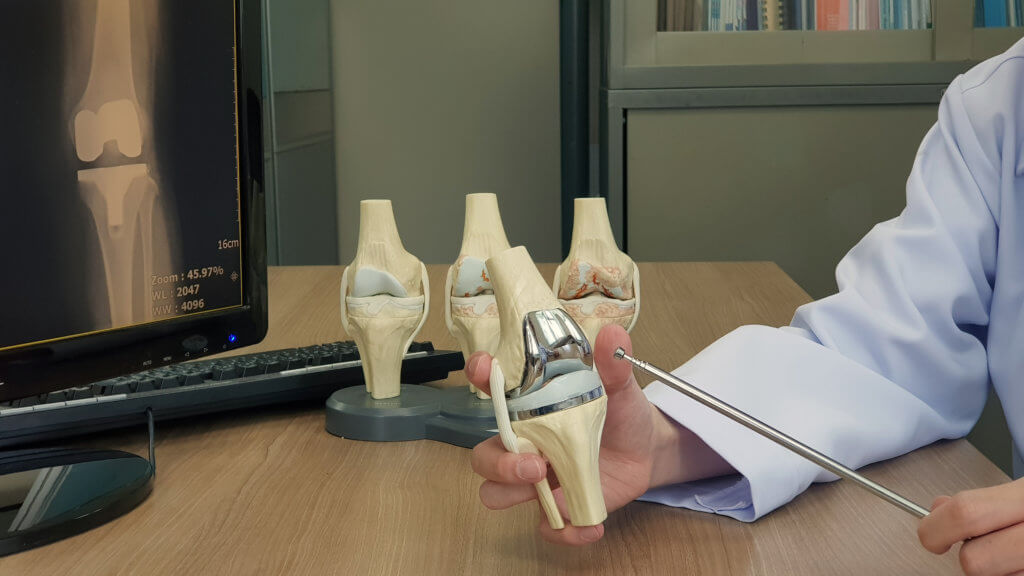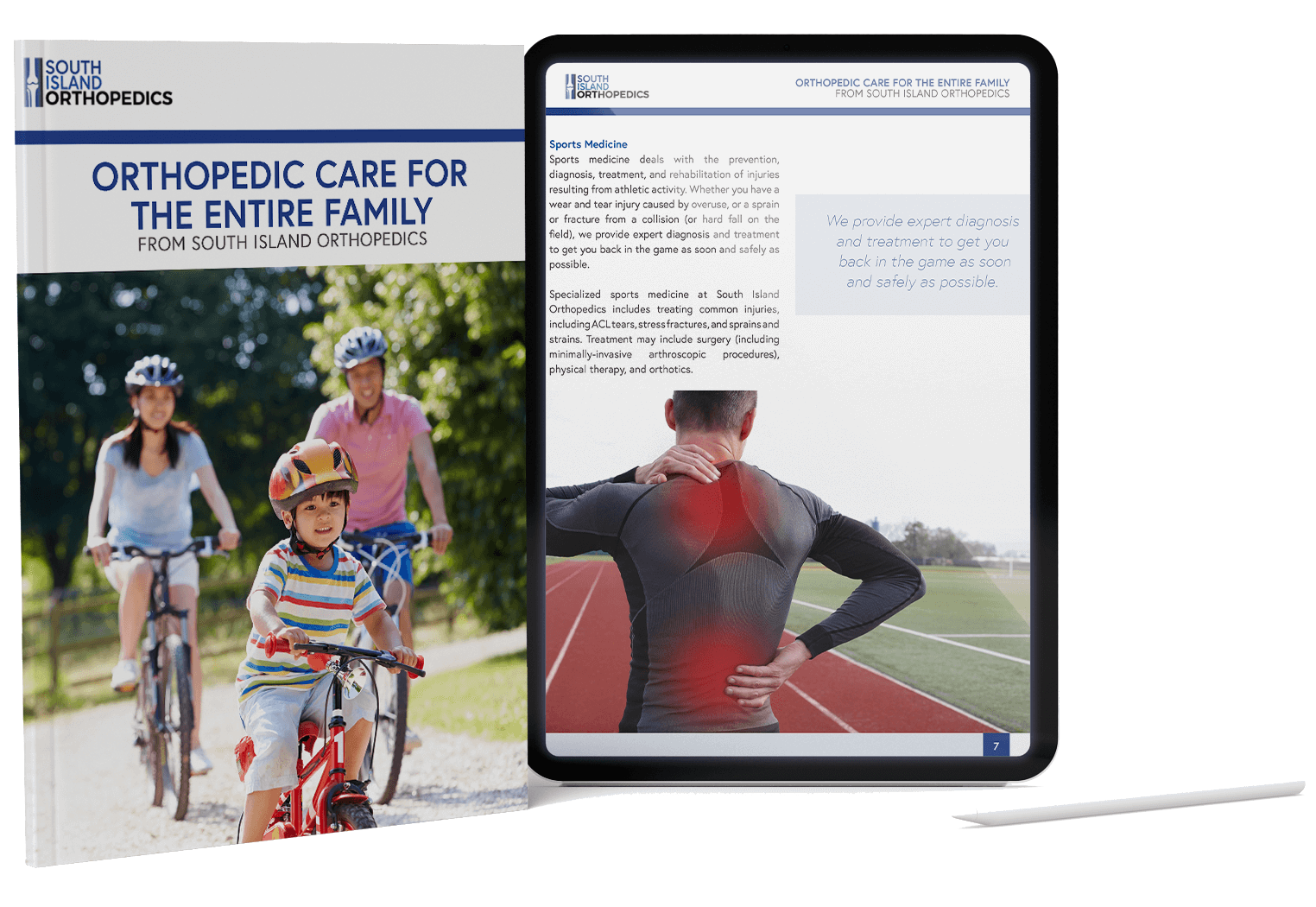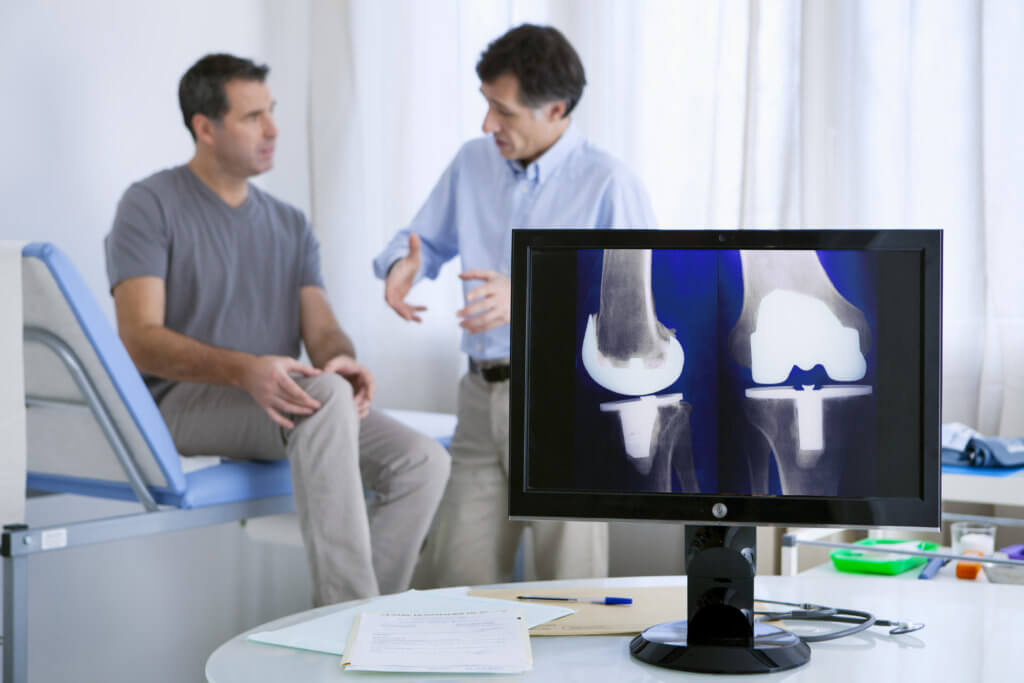A Guide to Knee Replacement Recovery
Arthritis and severe knee injuries can leave you with persistent pain, which affects your everyday activities. When other treatments are ineffective, your orthopedic surgeon may recommend knee replacement surgery. Replacing damaged bone and cartilage with metal components makes it possible to restore range of motion, and function and enjoy most activities without pain. However, the effects are not instantaneous, and knee replacement recovery can take several months.
If knee replacement surgery is right for you, the team at South Island Orthopedics will be here for every step of your recovery. From managing your pain to using assistive devices to physical therapy to strengthen the joint, we are here for you. That commitment begins with ensuring every patient knows what to expect after total knee replacement surgery.
Knee Replacement Recovery: Immediately Post Surgery and Beyond
Although some total knee replacement surgeries are performed in an outpatient surgical center, most people spend 1-4 days in the hospital after the procedure. During that time, the immediate concern is pain management and ensuring you are ready for safe discharge. Although complications during knee replacement recovery are rare, there are some risks for infection and blood clots. Recovering in the hospital for a few days helps ensure these complications don’t occur while giving your medical team the chance to help you learn the signs of a complication. Even when you remain in the hospital post-surgery, you won’t spend all your time lying in bed. Once you’ve recovered from the anesthesia, expect to start exercising your knee, foot, and ankle within a few hours. This is vital to preventing blood clots.
You’ll most likely be discharged from the hospital once your pain is under control, and you can:
- Get in and out of bed
- Walk with an assistive device like crutches or a walker
- Walk up and down 2-3 stairs with assistance
- Eat and drink normally
- Use the bathroom
- Perform your physical therapy exercises
Expect to need help at home for several days after surgery—but again, that doesn’t mean resting 24/7. Don’t expect to return to all of your normal activities right away or attempt to do too much too soon, but staying relatively active according to your surgeon’s instructions is a vital part of knee replacement recovery.
The Timeline for Knee Replacement Recovery
According to the American Association of Knee and Hip Surgeons (AAKHS), it may be as long as 12 weeks before you can resume most of your normal activities, and 6-12 months before the joint is strong and resilient. AAKHS breaks down the timeline of knee replacement recovery as follows:
Weeks 1- 3: Focus on building up to standing or walking for 10 minutes or longer, switching from crutches to a cane, and building strength with prescribed exercises.
Weeks 4-6: Return to daily activities, including driving and household chores, while still performing physical therapy and strengthening exercises as directed.
Weeks 7-12: Begin returning to low-impact physical activities, including swimming and cycling, and continuing physical therapy to regain full range of motion in the joint.
After three months, your activities and further treatment should be discussed with your surgeon and physical therapist. Depending on how well you have healed and progressed with recovery, you may be cleared to return to more strenuous activity, or require additional therapy.
What to Expect from Knee Replacement Exercises
Exercise is one of the keys to knee replacement recovery. In the early days, exercise helps reduce blood clot risk. Staying on track with your physical therapy program helps speed healing and strengthen muscles, letting you get back to your normal life sooner.
Immediately after surgery, your surgeon or physical therapist may use a Continuous Passive Motion (CPM) machine. The CPM elevates and gently rotates your knee while in bed to help improve blood circulation and move the muscles.
While you are in the hospital, a physical therapist or your nurse will lead you through a series of exercises within a few hours post-surgery. These moves may be uncomfortable at first but are crucial to preventing blood clots, strengthening your muscles, and improving your knee movement. They also help you have a faster, less painful recovery.
Some of the exercises you may be asked to perform include:
- Quadricep sets
- Straight leg raises
- Ankle pumps
- Knee straightening exercises
- Knee bends, in bed, and both supported and unsupported in a chair or on the side of the bed
Post-Discharge Exercises 
Before you leave the hospital, you’ll spend some time walking. Walking is one of the most important knee replacement exercises. Over time, you’ll be able to put more weight on your leg and eventually be able to walk without any type of assistive device. Navigating stairs is another important part of your recovery. You should be able to go up and down a few stairs before leaving the hospital, but practicing on stairs builds endurance and strength. Your physical therapist will also recommend additional exercises to aid in your recovery during the first few months post-surgery. Some of the most common exercises include:
- Standing knee bends
- Assisted knee bends
- Resistance exercises
- Stationary biking or exercycling
Following through with our exercises at home in between physical therapy sessions is vital to your recovery. It’s normal to have some pain and swelling after exercising but applying ice and elevating your leg can alleviate any discomfort. As your leg strengthens, you should have significantly less pain.
Can I Be Just as Active?
Many patients wonder if knee replacement surgery will allow them to be just as active as before having a damaged knee. While a “new knee” will eliminate pain and improve your range of motion, it will not restore full function. Your surgeon will determine the goals for your surgery based on the current condition of your knee, so you know what to expect.
While it’s certainly reasonable to expect a return to most of your day-to-day activities, a total knee replacement does not allow participation in strenuous activities like running. Take care to avoid falls or other accidents that could injure or damage your knee, as they may require additional surgery. Expect to see your orthopedic surgeon every few years post-surgery as well, to evaluate the condition of your knee.
Knee Surgery at South Island Orthopedics
If you have persistent knee pain that isn’t responding to other treatments, you may be a candidate for a total knee replacement. To learn more about the procedure, including what to expect from recovery and beyond, make an appointment with one of our board-certified orthopedic surgeons. SIO has two convenient locations on Long Island to serve both the North and South Shore, and we are committed to helping you live a full, pain-free life.
To make an appointment, click here, or call the Cedarhurst location at (516) 295-0111.
South Island Orthopedics’ Guide to Bone and Joint Care

Posted in: Knee


